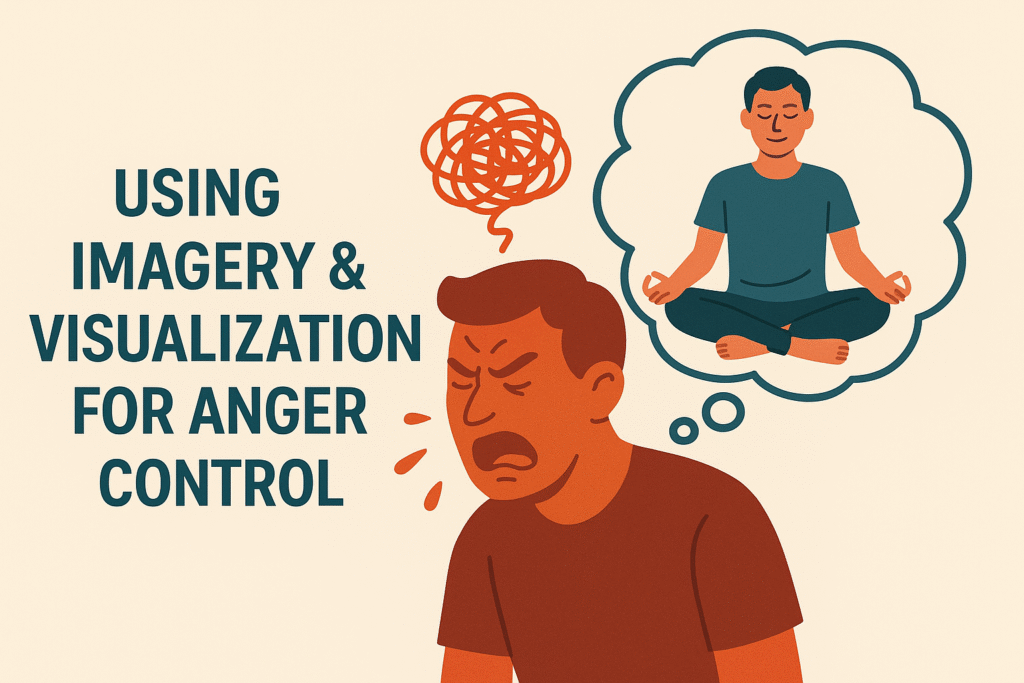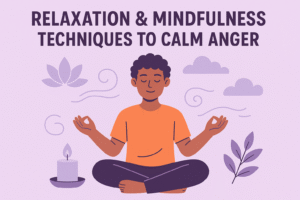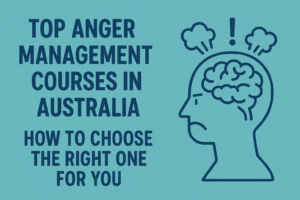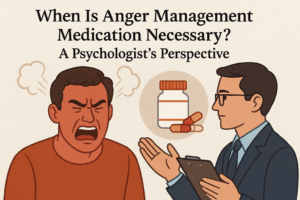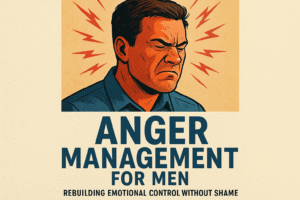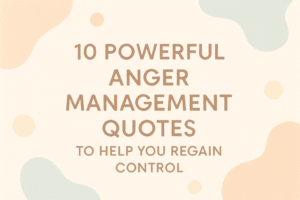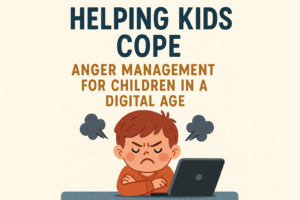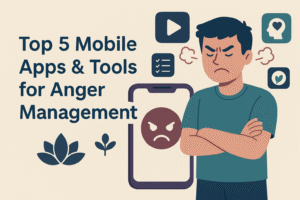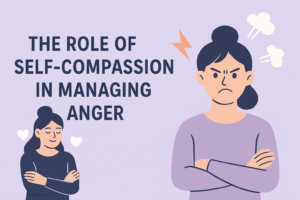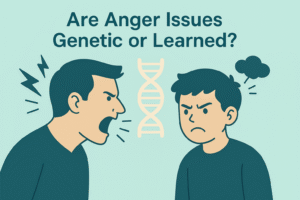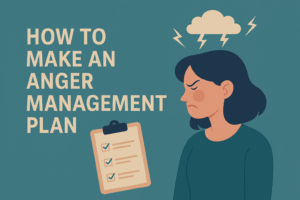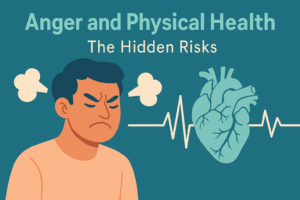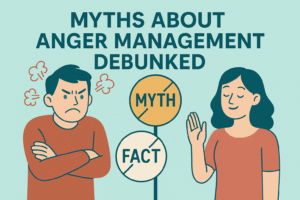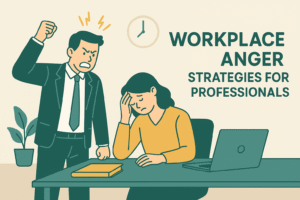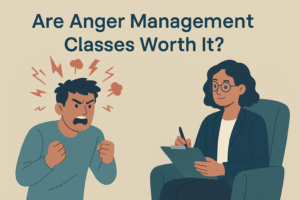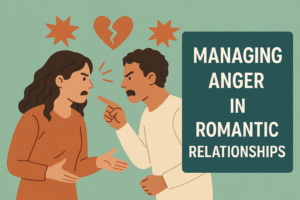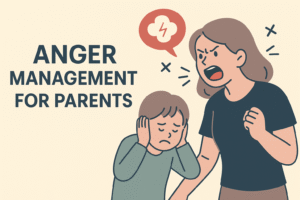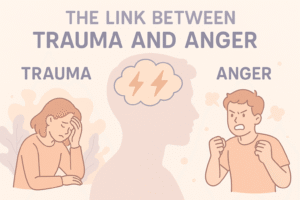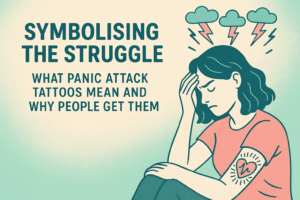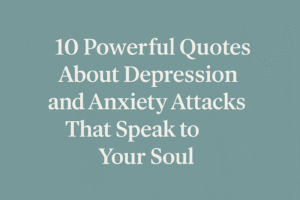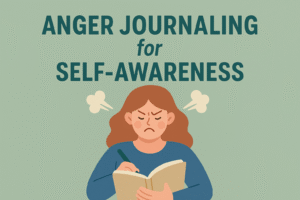Anger can feel sudden, overwhelming, and difficult to manage. But just as your mind can spiral into rage, it can also lead you out of it—using the power of imagery and visualization. These simple, yet effective, techniques engage your imagination to help reduce anger in the moment and improve emotional regulation over time.
In this article, we’ll explore how visualization works, how to use it during high-stress moments, and how to build your own personalized imagery practice to calm intense feelings.
Guided Imagery Explained
Guided imagery is a technique that uses your mind’s ability to create mental pictures to influence your emotional state. When you picture something calming, your brain and body begin to respond as if it’s really happening. This helps soothe the nervous system and de-escalate strong emotions—especially anger.
Why It Works:
- Engages the imagination to replace negative mental images
- Shifts focus away from triggers
- Calms the fight-or-flight response
- Activates the parasympathetic nervous system (rest and recovery mode)
Guided imagery isn’t about avoiding anger—it’s about creating internal space where clarity and calm can return.
Safe-Place Visualizations
A popular visualization method for anger control is the “safe place” exercise. This involves imagining a peaceful environment where you feel grounded, secure, and calm.
How to Practice:
- Sit or lie down comfortably and close your eyes.
- Take a few deep breaths to center yourself.
- Visualize a place where you feel completely safe and calm. This could be:
- A beach at sunrise
- A forest path
- A cozy cabin with a fire
- Anywhere that feels relaxing and emotionally neutral
- A beach at sunrise
- Engage your senses:
- What do you hear? (waves, birds, wind)
- What do you see? (colors, shapes, nature)
- What do you feel? (warm sunlight, soft blanket)
- What do you smell? (fresh air, lavender, wood smoke)
- What do you hear? (waves, birds, wind)
- Stay in this space for a few minutes, breathing slowly and deeply.
- When ready, gently bring yourself back to the present.
Practicing this imagery even once a day can make it easier to access in stressful moments.
Using Visualization in Heated Moments
Visualization isn’t just for quiet times. It can also be used during or immediately after a triggering event to interrupt anger escalation.
Here’s How to Apply It:
- Pre-visualize before known triggers: If you know a meeting or conversation might be difficult, imagine staying calm and composed ahead of time.
- Reset mid-conflict: Excuse yourself briefly to take a few breaths and picture your calming scene for just 30 seconds.
- Post-incident recovery: After an outburst or argument, close your eyes and return to your safe place to soothe lingering stress.
Using visualization in real time helps create a buffer between your emotion and your reaction.
How to Develop a Personal Script
While guided recordings can be helpful, creating your own visualization script makes the practice more emotionally relevant and easier to recall during stressful moments.
Steps to Create Your Script:
- Choose a calming setting (real or imagined).
- Write out a short paragraph describing the place using sensory detail.
- Add affirming phrases like:
- “I am safe here.”
- “I am calm and in control.”
- “I can return to this place any time I need.”
- “I am safe here.”
- Read the script aloud slowly or record it in your voice.
Repeat your script during peaceful moments, so your brain learns to associate it with calm. Over time, it becomes easier to access even in high-stress situations.
Examples of Visualization Scripts
Script 1: Beach Calm
“I’m walking slowly along a warm, quiet beach. The sand is soft beneath my feet. Gentle waves lap at the shore, and a light breeze brushes against my face. I hear the sound of gulls in the distance and the rhythmic sound of the sea. I feel calm. I am in control. I choose peace.”
Script 2: Mountain Retreat
“I’m inside a cozy cabin on a mountain. A fire crackles gently nearby. Outside the window, snow falls softly on pine trees. I sip warm tea, feeling completely safe. My mind is still. My body is relaxed. I am grounded and steady.”
You can personalize these scripts based on your preferred environments, sounds, and sensations.
Benefits of Visualization Over Time
Visualization is most effective when practiced consistently—even when you’re not feeling angry. Just like physical fitness, emotional fitness builds with repetition.
Long-Term Benefits:
- Increased emotional awareness
- Better control during stress or conflict
- Reduced physical symptoms of anger (tight muscles, rapid heart rate)
- Improved confidence in handling challenging situations
- Greater ability to stay present and grounded
Many clients at youronlinepsychologist use imagery as part of their weekly anger management routines—alongside tools like journaling, breathwork, and CBT.
How Visualization Complements Other Anger Tools
Visualization is not a replacement for deeper emotional work—but it’s a powerful add-on to other anger management strategies.
It pairs well with:
- Cognitive restructuring: Visualizing new outcomes to challenging scenarios.
- Journaling: After writing about an angry moment, imagine a different response.
- Breathing exercises: Combine slow breathing with calming imagery.
- Therapy: Use guided imagery sessions to reinforce therapeutic insights.
The key is integrating visualization into your daily toolkit, so it becomes second nature when emotions rise.
When to Seek Support
If anger feels out of control—or if visualization doesn’t seem to help on its own—it might be time to get additional support. Signs include:
- Frequent emotional outbursts
- Difficulty calming down after conflict
- Physical symptoms (e.g., headaches, tension) related to stress
- Feeling disconnected from yourself or others after anger
- Strained relationships due to reactivity
Anger Management Therapy can help uncover underlying triggers, identify emotional patterns, and build a personalized anger regulation strategy—including guided imagery techniques tailored to your needs.
Final Thoughts
Anger may feel like it comes from nowhere—but your mind holds the power to shift that energy. Visualization and guided imagery offer a practical, effective way to calm your nervous system, regain emotional clarity, and respond with intention.
Whether you imagine a beach, forest, or your own safe place, taking a mental break from chaos gives your body time to reset. With practice, you can use these techniques not just during anger, but as part of your daily emotional wellness routine.

